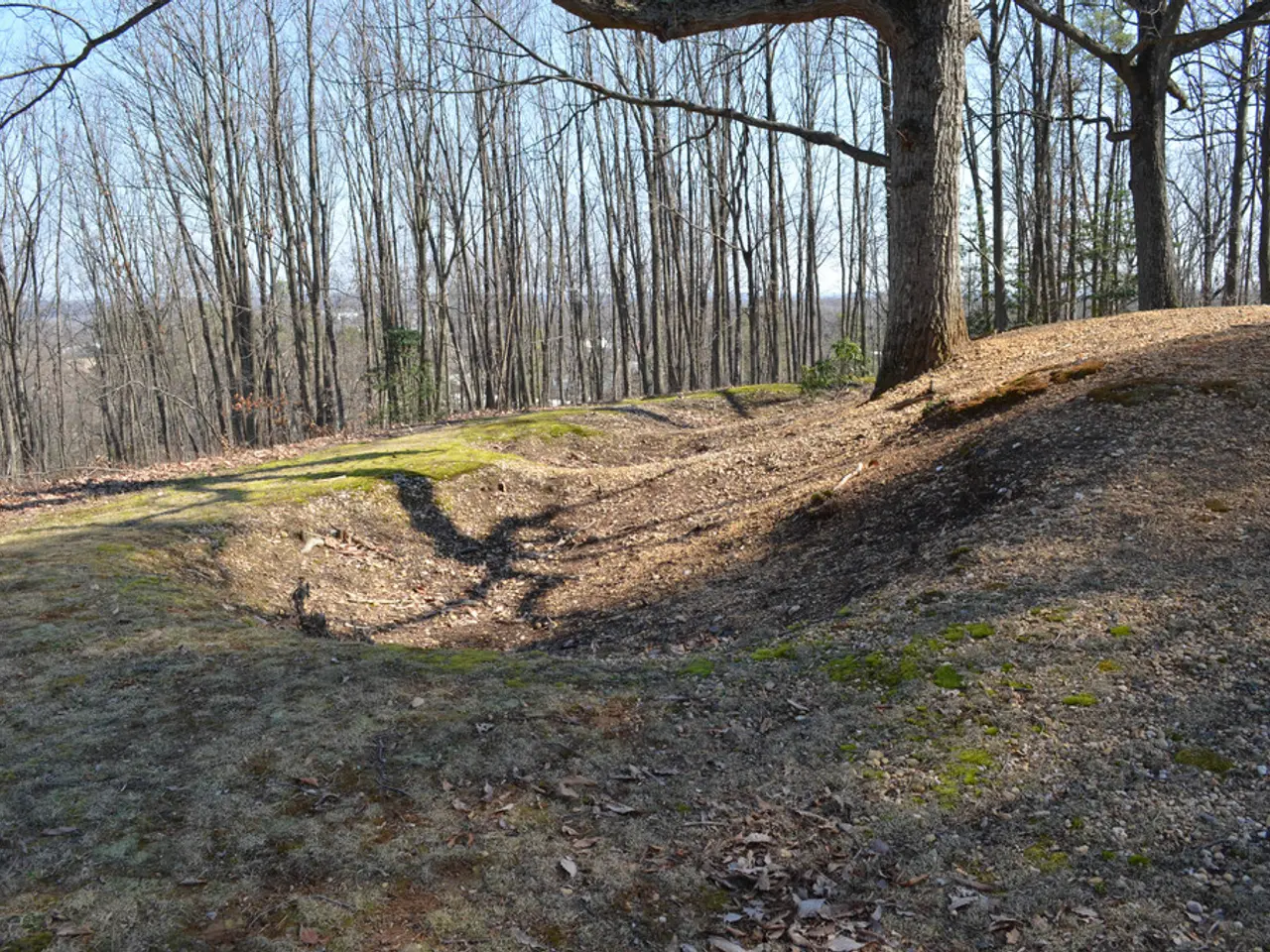Comprehensive Overview of Mulching Techniques
Mulching is a simple yet effective technique to enhance your garden's health and appearance. By adding a protective layer around plants, you can improve your garden's soil, retain moisture, suppress weed growth, and protect against harsh weather conditions.
Mulching materials can be divided into two categories: organic and inorganic. Organic mulch, such as wood chips, straw, leaves, or pine needles, is biodegradable and breaks down over time to enrich the soil, providing higher levels of nutrients to plants. Organic mulch also improves soil structure, retains moisture, suppresses weed growth, and can improve soil texture in gardens that get a lot of snow.
On the other hand, inorganic mulch, like slate, shingles, pebbles, and stone clippings, does not improve the soil structure or retain moisture. Inorganic mulch, especially in sunny locations, can potentially kill delicate plants and young trees due to heat retention.
When preparing to mulch, it's essential to first amend the soil. This involves preparing the soil with nutrients before adding a layer of protection. After soil amendment, a 2-inch thick layer of mulch should be laid over the ground, ensuring it avoids the plant stems or trees.
The ground should be cleared of weeds, twigs, small stones, and other debris, then raked until the soil texture is loosened. If the ground is too compact, pour water into the soil then continue raking. After amending the soil, work the fertilizer into the soil and optionally conduct a soil test to check the acidity or alkalinity of the soil.
The best practices for applying mulch in a garden include spreading a 2 to 4-inch layer of organic mulch evenly while keeping it away from the stems and trunks of plants. Specifically, leave about 1 inch gap around vegetable stems, 3-5 inches around shrubs, and at least 6 inches from tree trunks with a mulch ring extending about 3 feet beyond that point. Apply mulch in early spring or as soon as the soil is workable, and be sure to water the soil before mulching if it is dry to help retain moisture. Avoid piling mulch directly against plants to prevent moisture-related problems. Spread mulch starting from the inside of beds outward, tapering edges to prevent smothering plants and to create clean boundaries.
Mulching offers numerous benefits, including retaining soil moisture, suppressing weed growth, protecting from soil erosion, and acting as a pest deterrent. Mulching can deter destructive critters like slugs, snails, rabbits, mice, rats, and insects harmful to plants, while supporting the growth of beneficial critters like earthworms. Using landscaping fabrics under mulch can further improve plant growth by allowing moisture and air to seep into the material.
Old wood chips, especially pine or eucalyptus, are rich in nitrogen and contribute significantly to proper plant growth. The mulch layer thickness depends on the garden type and conditions: about 2 inches for general beds, 3 inches for vegetable gardens or moisture retention, and up to 4 inches for areas with heavy weed pressure.
Mulching early in the season helps with moisture retention and weed suppression; applying mulch at the season’s end nourishes soil and prevents early spring weeds. Use wheelbarrows for transporting mulch to avoid compaction and footprints that disrupt spread mulch. Water plants deeply but less frequently, ideally in the morning, and water at the base rather than overhead to conserve water and direct it to roots. Choose disease-free mulch materials to avoid introducing pests or pathogens into your garden.
Following these guidelines will help improve soil moisture conservation, temperature regulation, weed control, and overall plant health. Happy mulching!
[References] [1] Gardening Know How. (2021). Mulching Your Garden: Tips for Success. Retrieved from https://www.gardeningknowhow.com/garden-how-to/soil-fertilizers/mulching-your-garden-tips-for-success.htm
[2] The Spruce. (2021). How to Mulch: A Step-by-Step Guide. Retrieved from https://www.thespruce.com/how-to-mulch-a-garden-2132738
[3] The Old Farmer's Almanac. (2021). Mulch for Gardening: Types, Benefits, and How to Apply. Retrieved from https://www.almanac.com/plant/mulch-for-gardening-types-benefits-and-how-to-apply
[4] Michigan State University Extension. (2021). Mulch: A Gardener's Best Friend. Retrieved from https://msue.anr.msu.edu/news/mulch_a_gardeners_best_friend_15922
[5] Fine Gardening. (2021). How to Mulch: The Complete Guide. Retrieved from https://www.finegardening.com/article/how-to-mulch-the-complete-guide
Adding organic mulch, such as wood chips, straw, leaves, or pine needles, to your home-and-garden can not only enhance your lifestyle by providing a clean and attractive appearance but also improve your garden's soil health and retain moisture. By following best practices for applying mulch, like spreading a 2 to 4-inch layer evenly and keeping it away from plant stems, you can promote a healthier and more productive lifestyle through gardening.




